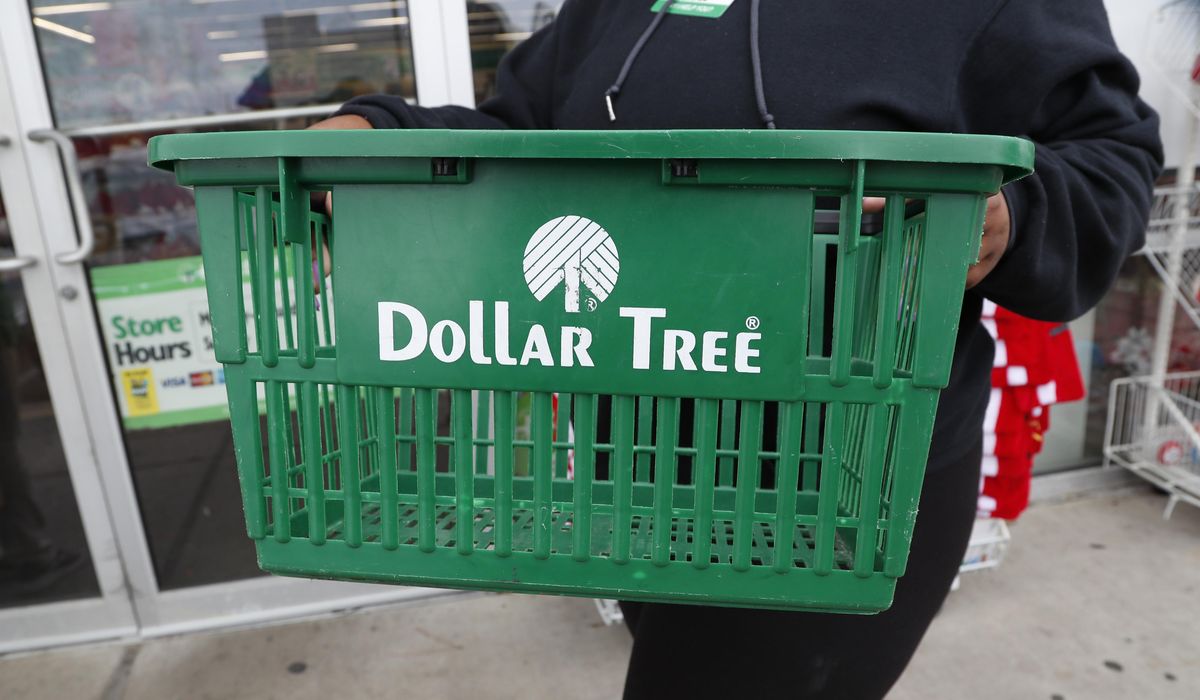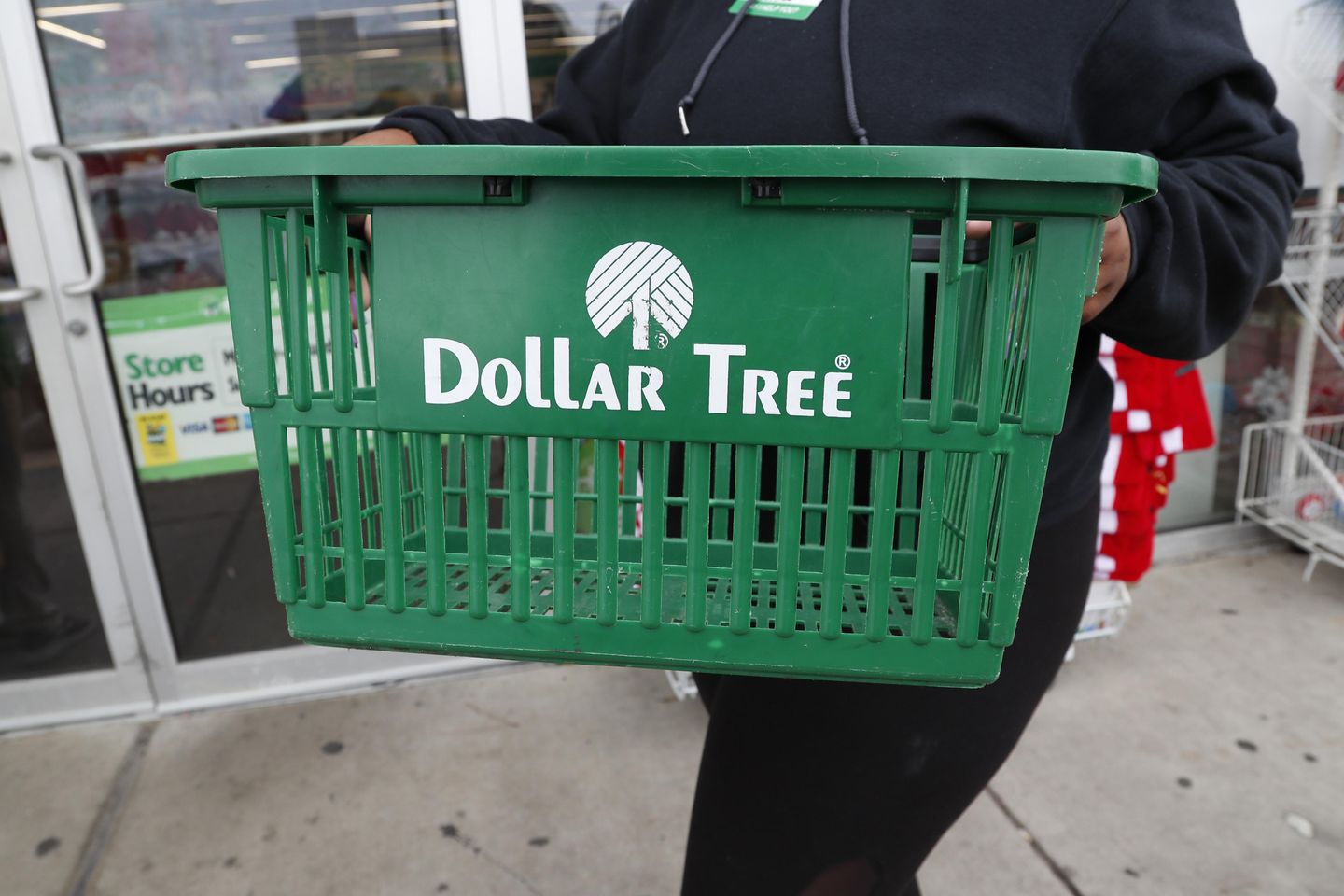More Americans buying food at dollar stores, surge seen in rural areas, study shows


Dollar stores have become the fastest-growing source of groceries for Americans by share of household food spending, especially among poor Black people in rural areas, according to a recent study.
Researchers from Tufts University found dollar stores’ share of household food purchases increased by 90% overall and by 103% in rural areas from 2008 to 2020, the Journal of the American Medical Association reported this week. That alarms some advocates who say the growing popularity of those stores’ limited fare is a double-edged sword.
The study found Black Americans in rural communities spent the most — 11.6% of their food budget — on groceries at dollar stores in 2020.
Dollar stores profit big from selling “suboptimal food at ever increasing rates” to “poor and Black” people, said Brian Vines of the advocacy group Consumer Reports, commenting on the findings.
“Most people in this country live closer to a dollar store than a hospital,” Mr. Vines said in an email. “For communities dominated by dollar stores stocked with highly processed frozen or shelf-stable foods, lack of healthy options may be part of a larger landscape of limited health care, housing and employment opportunities.”
Dollar stores could become a positive influence by offering more than junk snacks and processed food, said the study’s lead researcher, Wenhui Feng, a health care policy professor at the Tufts University School of Medicine in Boston.
“On the one hand, dollar stores raised concerns because they do not always carry the most healthful combination of foods,” said Ms. Feng, who published the original version of the study in the American Journal of Public Health on Jan. 19.
“On the other hand, dollar stores may be filling the voids where local grocers do not have enough business to support maintaining a store,” she added in an email.
The study analyzed the food purchases of a randomized national sampling of 50,000 shoppers who used a special scanner to record bar codes while buying groceries.
Overall, spending at dollar stores doubled from 1% of household food purchases in 2008 to 2% in 2020. By comparison, spending at grocery stores dropped from 62% to 58% of food purchasing during the study period.
As household incomes decreased in the study, the share of food purchases at dollar stores increased across the board, meaning the trend likely accelerated during the pandemic due to inflation.
The national study is the first to report changes in food spending habits across all store types, demographics and regions, said Lauren Chenarides, a food economist at Arizona State University.
“The increase in dollar store food purchases, as indicated in the article, may indicate a growing trend of cost-consciousness among consumers, as these stores offer low-priced food options,” Ms. Chenarides told The Washington Times. “It can also indicate that dollar stores are the only viable food retail outlets in these rural communities.”
She noted dollar stores have become more common in many parts of the country than Walmart, which leads the U.S. in retail food sales at its 4,600 locations nationwide.
The top three dollar store chains of Dollar General, Family Dollar and Dollar Tree have expanded to more than 31,000 locations nationwide.
Since 2004, Dollar General has grown from 6,700 stores to more than 18,800 and Dollar Tree expanded from 2,700 locations to more than 16,200 in October. Dollar Tree acquired Family Dollar in 2015 but kept its name and storefronts.
None of these dollar stores responded to emails from The Times. Another chain, 99 Cents Only Stores, declined to comment.
Last August, Dollar General pledged to offer fresh produce in more than 10,000 stores over the next few years.
“Given their scale of operations, this could provide greater access to more healthful food choices,” Joshua Berning, a food economist at Colorado State University, said in an email. “I think there is some stigma with dollar stores, but that is changing and will continue to change as they invest in and expand their product offerings.”
A 2022 study from the National Institutes of Health found that 25 cities — including Atlanta, Cleveland and New Orleans — restricted dollar stores from 2018 to 2020. The new laws range from moratoriums on new stores to ordinances limiting how many can be in the same area.
The tendency of dollar stores to sell unhealthy food and attract crime were top concerns city officials cited in the bans, according to that study. It noted that Black or Hispanic people were more than half the population and poverty rates exceeded the national average in most of the cities.
Dollar stores still reflect less than 3% of the overall grocery market, according to the U.S. Census Bureau.
But the Tufts University study confirmed their food sales are growing faster than supermarkets, convenience stores and even supercenter stores like Walmart or Target.
Food economists say dollar stores often benefit from being the only grocery option in certain neighborhoods more than any significant cost savings. Few items in the stores cost a dollar or less anymore, least of all the food.
In 2019, 54 million Americans lived in “food deserts” with low incomes and low access to grocery stores within reasonable distances, according to the Department of Agriculture.
As dollar stores target these areas, they could put any remaining mom-and-pop grocers out of business, Ms. Chenarides said.
“This trend could potentially harm small, local grocery stores, who could serve as employers for the local community,” she said. “We are conducting another research study to examine the dollar store expansion on labor markets.”
[ad_2]
Share this news on your Fb,Twitter and Whatsapp
Times News Network:Latest News Headlines
Times News Network||Health||New York||USA News||Technology||World News